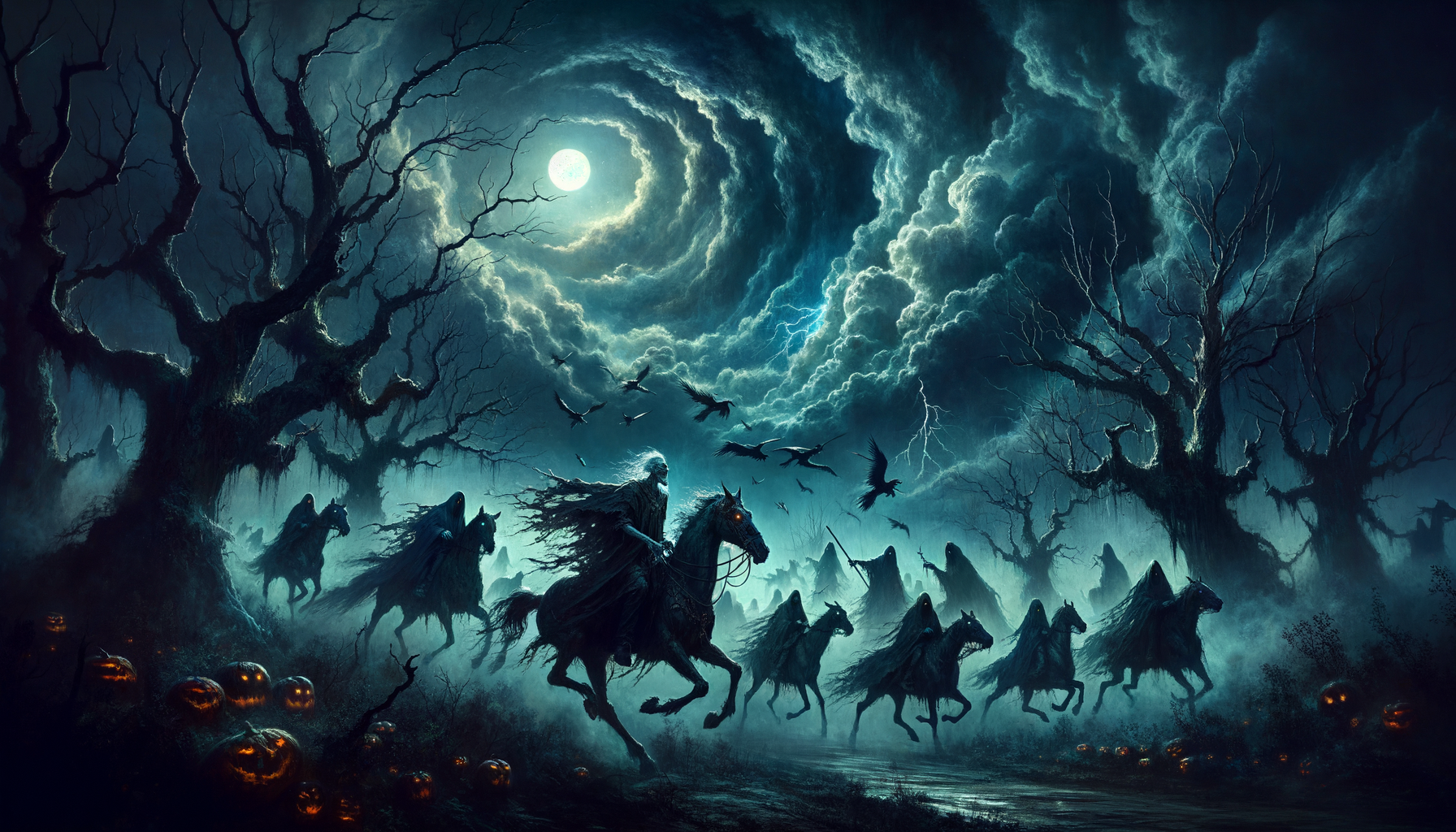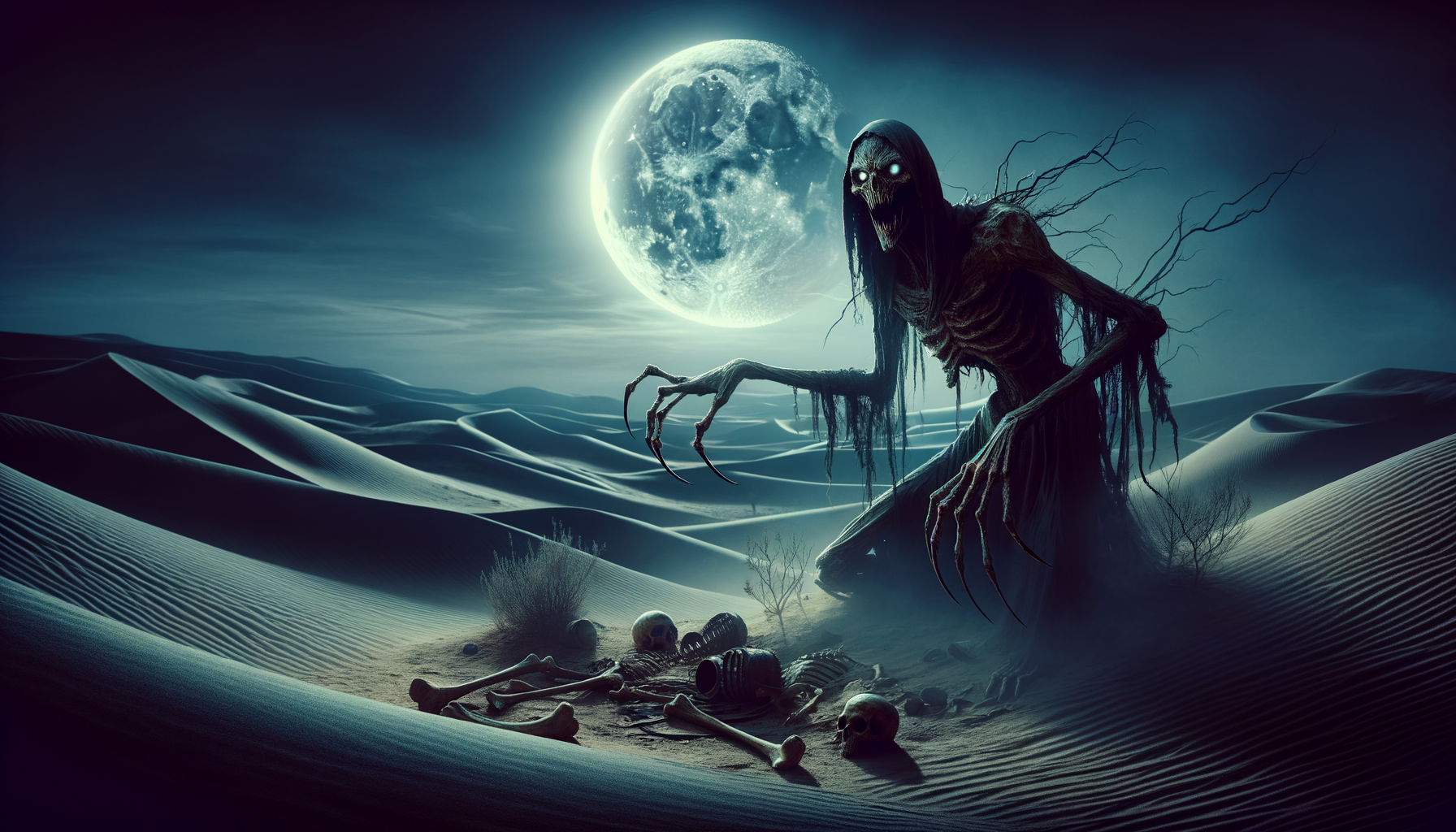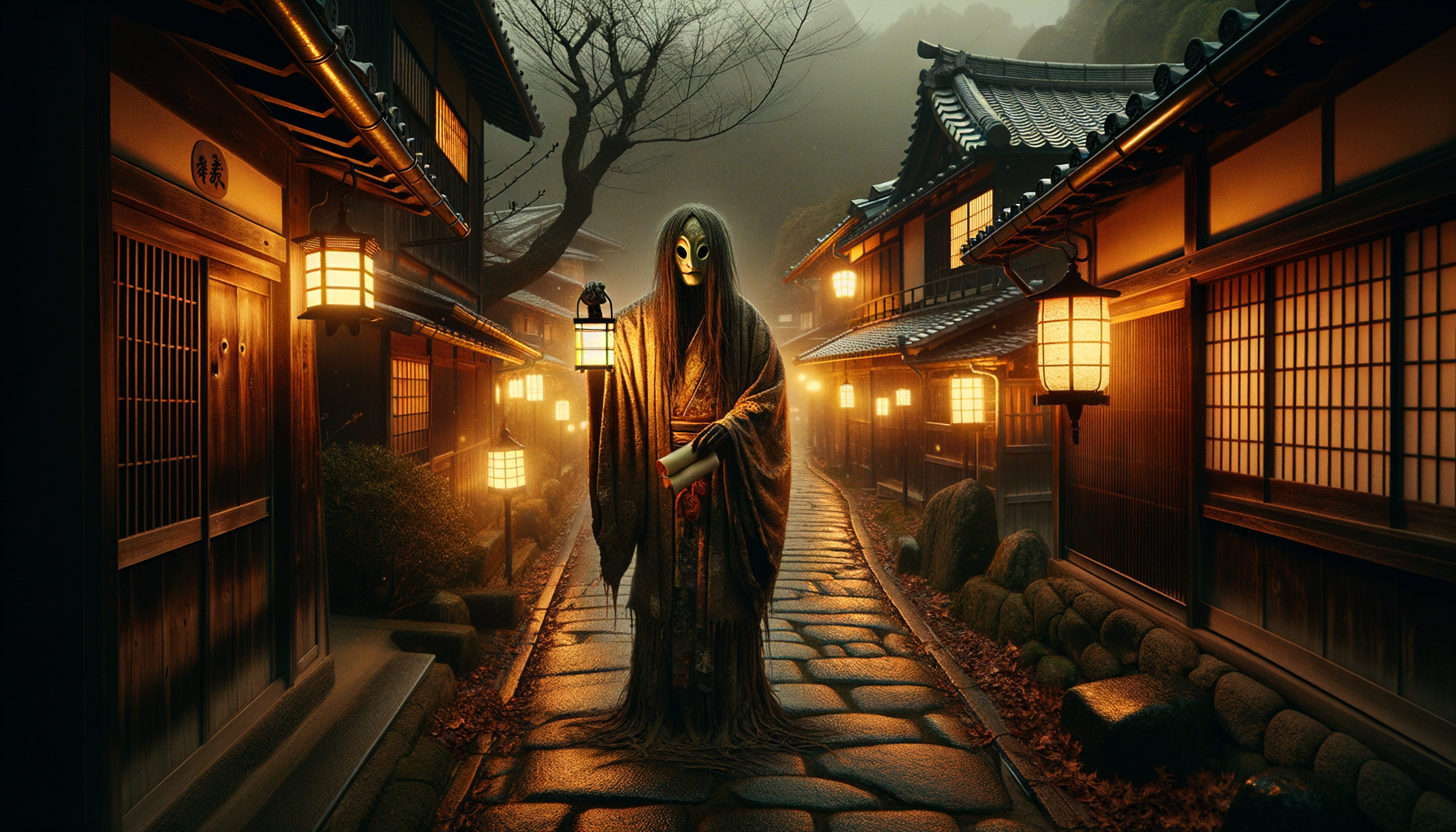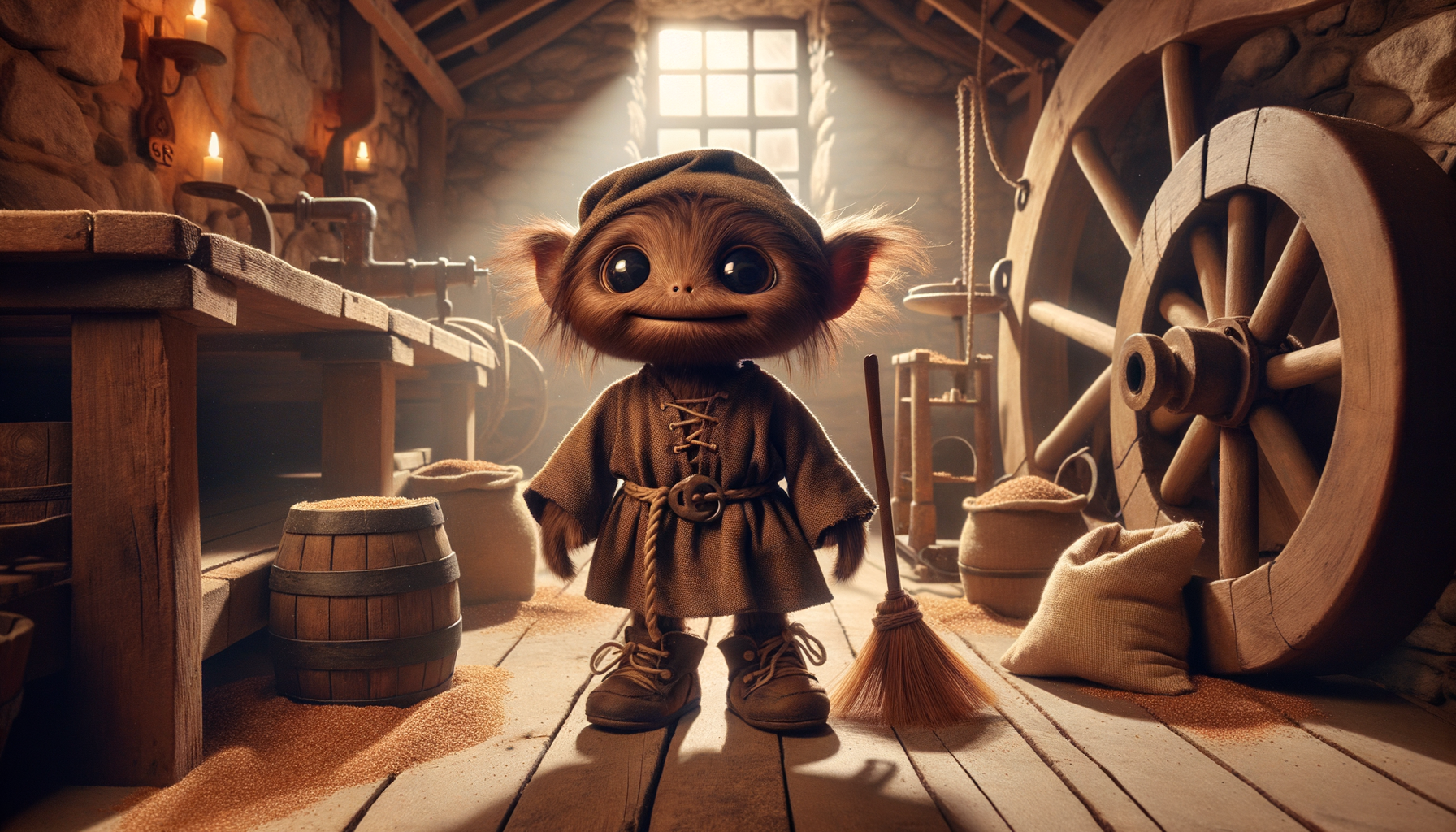The Germanic Wild Hunt! It’s a name that conjures images of dark forests, spectral riders, and ghostly hounds. Have you ever wondered where this chilling legend comes from or why it has persisted through the ages? You’re about to embark on a journey into one of the most fascinating and enduring myths in Germanic folklore. According to ancient tales, entire villages would tremble at the sound of the hunt in the sky. Even today, this myth continues to capture our imaginations and inspire countless stories and artworks.
Origins of the Germanic Wild Hunt
Tracking the First Mentions in Ancient Texts and Folklore
When we delve into the origins of the Germanic Wild Hunt, the first step is to explore ancient texts and folklore. The Wild Hunt is a spectral phenomenon described in various Germanic traditions, where a ghostly group of hunters is said to sweep through the skies. Early mentions appear in medieval manuscripts and oral traditions, painting a vivid picture of this eerie procession.
Notable Literary Works that Reference the Wild Hunt
Several notable literary works have referenced the Wild Hunt, embedding it deeper into cultural consciousness. Jacob Grimm’s “Deutsche Mythologie” is one such influential work, where he details various accounts and interpretations of the Hunt. Similarly, the epic poem “Beowulf” and other medieval sagas often allude to wild, spectral huntsmen.
Connection to Germanic Pagan Deities
The Wild Hunt is intricately linked to Germanic pagan deities. Odin, the chief of the Norse gods, is frequently depicted as the leader of the Hunt. This connection underscores the Hunt’s deep roots in pre-Christian spiritual beliefs, where deities were often associated with the natural and supernatural worlds.
Similarities with Other European Folklore Traditions
Interestingly, the Wild Hunt is not unique to Germanic folklore. Similar tales exist across Europe, such as the “Cŵn Annwn” in Welsh mythology or the “Fairy Rade” in Scottish folklore. These parallels suggest a shared cultural motif of spectral hunts, reflecting common themes of life, death, and the supernatural.
How Socio-Political Events Shaped the Myth
Socio-political events have also shaped the narrative of the Wild Hunt. For instance, periods of social upheaval, such as the Black Death or wars, often saw an increase in tales of the Wild Hunt. These stories likely served as a means to explain and cope with widespread chaos and mortality.
The Impact of Christianization on its Narrative
With the advent of Christianization, the narrative of the Wild Hunt underwent significant changes. The Hunt was increasingly portrayed as a demonic event, a stark departure from its pagan roots. This transformation reflects the broader Christian effort to demonize pre-Christian beliefs and integrate them into a new religious framework.
Legendary Figures in the Wild Hunt
Odin, the Norse God, and His Role in the Hunt
Odin stands out as a central figure in the Wild Hunt. Known for his association with war, death, and the afterlife, Odin’s leadership of the Hunt symbolizes his dominion over both the living and the dead. His presence in the Hunt underscores its connection to Norse mythology and the cyclical nature of life and death.
Other Prominent Leaders Across Regions
Beyond Odin, other regions have their own leaders of the Wild Hunt. In British folklore, King Arthur is sometimes depicted as the Hunt’s leader, riding out with his knights. Similarly, Herne the Hunter, a ghostly figure in English folklore, is said to lead a spectral hunt through Windsor Forest.
The Spectral Riders: Who They Are and What They Represent
The spectral riders of the Wild Hunt are often portrayed as restless souls, condemned to eternal pursuit. These ghostly figures can represent various archetypes, from fallen warriors to lost souls. Their presence in the Hunt symbolizes the thin veil between the living and the dead, and the perpetual cycle of retribution.
The Hellish Hounds and Their Significance
Accompanying the riders are hellish hounds, often described as large, black dogs with fiery eyes. These spectral hounds are harbingers of doom and are believed to hunt down those who witness the Wild Hunt. They embody the fear of the unknown and the inevitability of death.
Symbolism and Meaning
Life and Death Cycles
At its core, the Wild Hunt symbolizes the cyclical nature of life and death. The ghostly hunters and their hounds represent the inescapable reality of mortality and the eternal pursuit of souls. This theme resonates across various cultures, reflecting a universal human preoccupation with death and the afterlife.
Nature and the Supernatural
The Wild Hunt also bridges the gap between nature and the supernatural. The hunt often takes place in wild, untamed landscapes, symbolizing the primal forces of nature. The supernatural elements, such as ghostly riders and hounds, highlight the mysterious and often terrifying aspects of the natural world.
Retribution and Justice
Another significant aspect of the Wild Hunt is its association with retribution and justice. Those who witness or are caught by the Hunt are often believed to be wrongdoers or individuals who have strayed from societal norms. This aspect of the myth serves as a cautionary tale, emphasizing the consequences of moral transgressions.
How Different Cultures and Eras Have Interpreted the Hunt
Different cultures and eras have interpreted the Wild Hunt in various ways. In some traditions, it is seen as a harbinger of war or disaster, while in others, it is a psychopomp guiding souls to the afterlife. These varying interpretations reflect the evolving cultural and social contexts in which the myth has been told.
Modern Theoretical Perspectives on Its Symbolism
Modern theoretical perspectives offer new insights into the symbolism of the Wild Hunt. Some scholars view it as a reflection of collective anxiety, while others see it as a manifestation of deep-seated archetypes in the human psyche. These contemporary interpretations continue to shed light on the enduring fascination with the Wild Hunt.
The Wild Hunt in Popular Culture
Notable Books and Stories Featuring the Wild Hunt
The Wild Hunt has left an indelible mark on popular culture, appearing in numerous books and stories. Authors like J.R.R. Tolkien and Neil Gaiman have woven the Hunt into their narratives, enriching their worlds with this ancient myth. These literary works keep the legend alive, introducing it to new generations of readers.
Representation in Movies, TV Shows, and Video Games
Movies, TV shows, and video games have also embraced the Wild Hunt. Series like “The Witcher” and films like “Sleepy Hollow” feature the Hunt as a central element, blending it seamlessly into modern storytelling. Video games such as “The Witcher 3: Wild Hunt” offer immersive experiences, allowing players to engage with the myth firsthand.
Artistic Depictions Throughout History
Artistic depictions of the Wild Hunt span centuries, from medieval manuscripts to contemporary art. These visual representations capture the haunting beauty and terror of the Hunt, reflecting the artists’ interpretations and the cultural context of their times. Paintings, illustrations, and even sculptures have all contributed to the myth’s rich visual legacy.
Musical Compositions Inspired by the Hunt
The Wild Hunt has also inspired musical compositions, from classical pieces to modern songs. Composers like Franz Liszt and Richard Wagner have created works that evoke the Hunt’s eerie atmosphere and dramatic intensity. These musical interpretations add another layer to the myth, highlighting its emotional and psychological impact.
Contemporary Significance
How the Wild Hunt is Celebrated or Remembered Today
Today, the Wild Hunt is celebrated and remembered through various means. Festivals and reenactments bring the myth to life, allowing communities to connect with their cultural heritage. These events often feature dramatic performances, costumes, and rituals that pay homage to the ancient legend.
Festivals, Reenactments, and Local Tales
Festivals and reenactments dedicated to the Wild Hunt are particularly popular in regions with deep ties to the myth. These celebrations offer a blend of entertainment and education, preserving local tales and traditions. They serve as a testament to the enduring power of the Wild Hunt and its ability to captivate and inspire.
Current Academic Studies on the Germanic Wild Hunt
Academic studies on the Germanic Wild Hunt continue to uncover new dimensions of the myth. Researchers from various disciplines, including folklore, history, and anthropology, investigate its origins, cultural significance, and evolution. These studies contribute to a deeper understanding of the myth and its place in human history.
Why This Myth Continues to Intrigue Researchers and the Public Alike
The Wild Hunt continues to intrigue researchers and the public alike for several reasons. Its rich symbolism, deep roots in cultural traditions, and adaptability to different contexts make it a compelling subject of study. Additionally, its themes of life, death, and the supernatural resonate with universal human experiences, ensuring its relevance across time and place.
Conclusion
The Germanic Wild Hunt is more than just a ghost story; it’s a tapestry of myth, history, and cultural evolution. From its pagan roots and legendary figures to its modern-day impact, this ancient tale has left an indelible mark on our collective imagination. As we continue to explore its depths, we discover ever more about our own fears, beliefs, and histories. Stay curious, and perhaps, the next time you hear the whisper of the wind on a dark night, you’ll think of the Wild Hunt. Dive deeper into this and other fascinating myths—subscribe to our newsletter and join the conversation!




